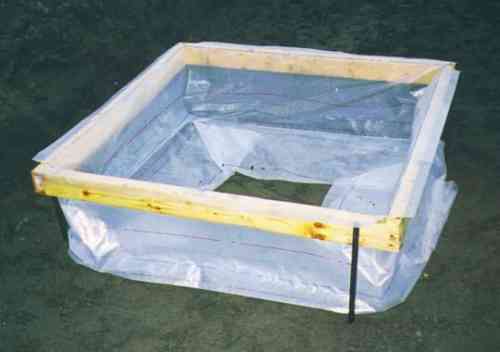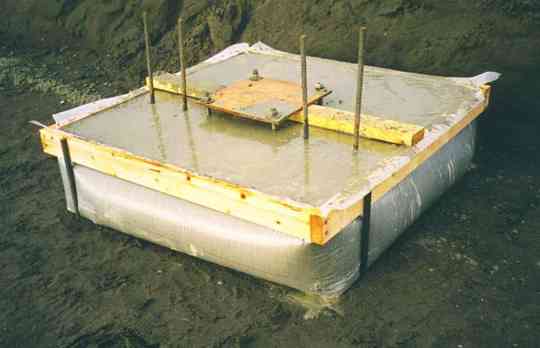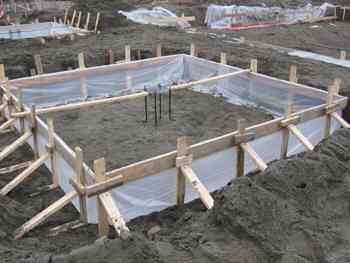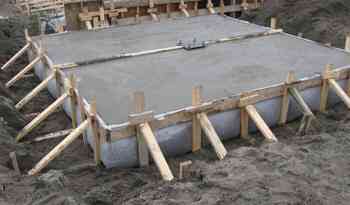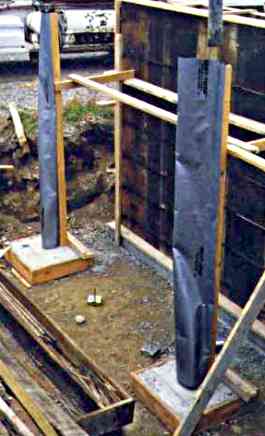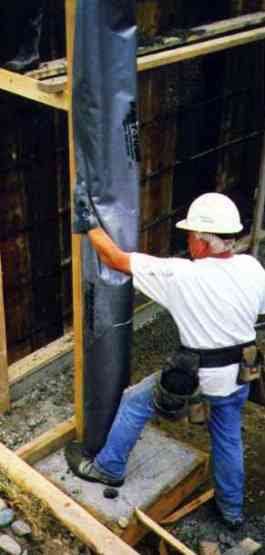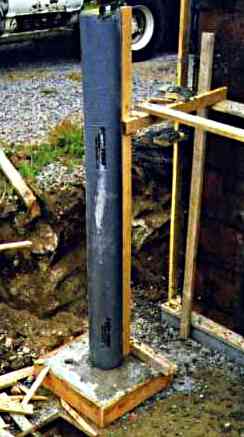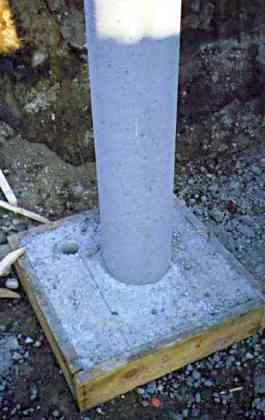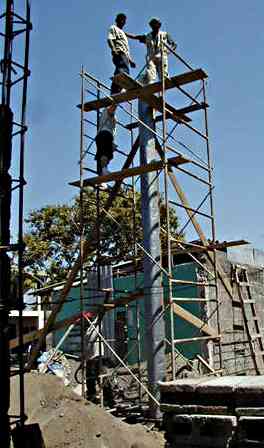 |
||||||||||||||||||||||
Fabric formworkI came across fabric being used for formwork while doing some research on formwork materials. It is a totally new concept to me, but I was immediately struck by the brilliant application of this most modern of formwork developments. This page is made possible by the kind permission of Rick Fearn of FAB-FORM INDUSTRIES LTD. All the photographs on this page and information are from there. Thanks Rick. I am not connected to them in any way, but I am putting this here as I believe that in many cases in the past, I could have used these techniques myself, to good effect, especially in remote locations. A method of forming footings - Fastfoot®.
As you can see from the above photo, the amount of solid conventional formwork is is very little in this formwork method. The fabric comes in rolls of certain widths and it is simply cut on site to suit the size needed. Apart from normal tools for cutting and fixing the braces and perimeter frame, the only extra items are a Stanley knife and a staple gun. The fabric is cut neatly with the knife and staple to the timber. There is a very simple method of cutting the fabric at the corners, and when it is simply stapled in position that it, in effect, holds the corners together just as strongly as normal methods. Before the pour, a sheet of standard plastic vapour barrier is laid on top of the fabric to stop the footing absorbing moisture if it is required.
Here we see the pad that has just been poured. No movement at the top and a slight bulging at the bottom. I can remember on more than one occasion seeing the plastic vapour barrier that we use under our slabs, do a similar thing, obviously someone saw the same thing and was inspired to do something about it.
Here is a larger slab ready to go. I suspect that the layer of sand in the bottom is to hold the edges of the fabric down until the weight of the concrete takes over the job.
A system for forming round concrete columns - FAST-TUBE®
Just in case you had any doubts of the strength of this system, on the right is a photograph of a 20ft tall column ready to be poured in one hit. The project for a church in Nicaragua. The concrete was mixed by hand on the site and lifted up by hand. In itself, this was probably a good thing as the slowness of the pour would mean that the concrete at the bottom would be stiffening up nicely as the height increased, reducing the theoretical hydrostatic pressure. I am not saying anything about segregation though:-) Not found it yet? Try this FAST SITE SEARCH or the whole web |
Other Formwork Pages.
|
|||||||||||||||||||||
|
|
||||||||||||||||||||||
|
Please Note! The information on this site is offered as a guide only! When we are talking about areas where building regulations or safety regulations could exist,the information here could be wrong for your area. It could be out of date! Regulations breed faster than rabbits! You must check your own local conditions. Copyright © Bill Bradley 2007-2012. All rights reserved. |
||||||||||||||||||||||
